The Belgian-German production De Vlaschaard (Boleslaw Barlog, 1943) was an adaptation of the Flemish 1907 novel of the same name by Stijn Streuvels. The film's premiere was at the Ghent cinema Capitool on 28 August 1943.
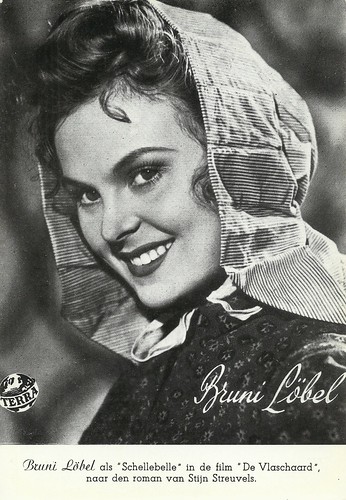
Belgian postcard. Photo: Terra Film. Bruni Löbel plays Schellebelle in De Vlaschaard (Boleslaw Barlog, 1943).
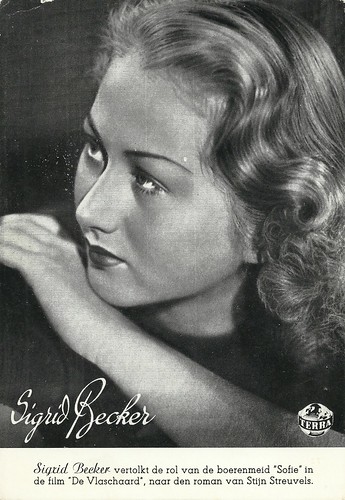
Belgian postcard. Photo: Terra Film. Sigrid Becker plays the maid Sofie in De Vlaschaard (Boleslaw Barlog, 1943).
During the Second World War, in occupied Belgium the German Terra Film company shot a rural drama based on the novel De Vlaschaard by Flemish author Stijn Streuvels about the generational conflict between a farmer and his son.
In 1942 Terra started with the shooting of the film, which finally would be released in Germany as Wenn die Sonne wieder scheint/When the Sun Shines Again in 1943. The film was partly shot in and around the city of Kortrijk/Courtrai.
Streuvels himself and dozens of people from the region acted as extras in the film, while the leads were for Paul Wegener, famous from the German Expressionist films like Der Golem, and Paul Klinger, who just before had acted in Veit Harlan's Die goldene Stadt, starring Kristina Söderbaum.
German propaganda minister Joseph Goebbels personally viewed the film and noted in his diary that 'Flachsacker' as it was initially called, was a farmers' film of high quality. According to him this was the first film that showed the farmer's world on an artistically high level.
Hardliners in the Flemish SS thought the dubbing too Dutch, and the adaptation as well too little Flemish. The producer also altered scenes to make it more attractive for a big audience, so the love interest became bigger, more humour was added, and the ending was less tragic.
The film fared rather well in Belgian and Dutch cinemas at the time. Many Flemish people went to see it.
Being a doomed film for decades for its Nazi background, in 2007 an initiative rose to restore the film and Cinematek Brussels restored both its German spoken and its Dutch dubbed version. The results were a DVD, a stage play and a book, curated by Roel Vande Winkel and Ine Van Lindhout. Just like in 1943, the Flemish press was divided whether this was a good film or not.
The novel De Vlaschaard would be adapted for film again in 1983 by Jan Gruyaert. Vic Moeremans, who played farmer Vermeulen in the new version, won a Golden Calf for his part at the Dutch Film Festival that year.
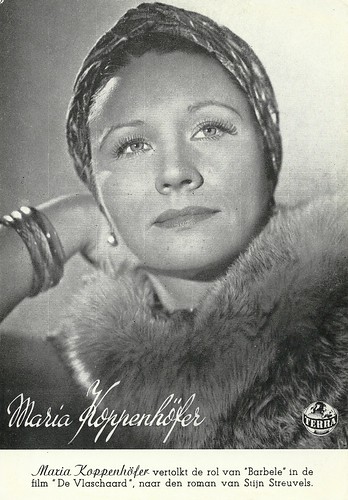
Belgian postcard. Photo: Terra Film. Maria Koppenhöfer plays Barbele in De Vlaschaard (Boleslaw Barlog, 1943).
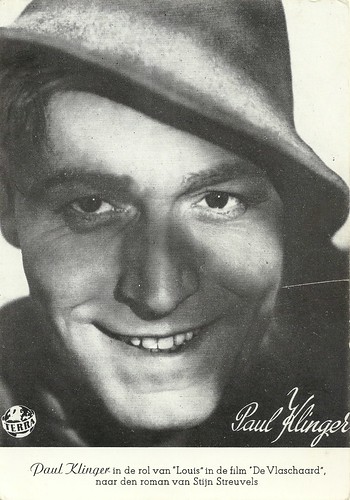
Belgian postcard. Photo: Terra. Paul Klinger as Louis in De Vlaschaard (Boleslaw Barlog, 1943).
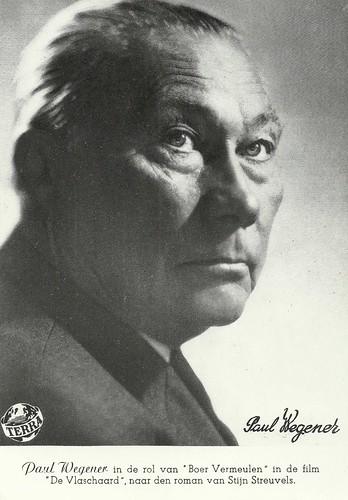
Belgian postcard. Photo: Terra. Paul Wegener as Boer (Farmer) Vermeulen in De Vlaschaard (Boleslaw Barlog, 1943).
Sources: Wikipedia (Dutch) and IMDb.

Belgian postcard. Photo: Terra Film. Bruni Löbel plays Schellebelle in De Vlaschaard (Boleslaw Barlog, 1943).

Belgian postcard. Photo: Terra Film. Sigrid Becker plays the maid Sofie in De Vlaschaard (Boleslaw Barlog, 1943).
A farmers' film of high quality
During the Second World War, in occupied Belgium the German Terra Film company shot a rural drama based on the novel De Vlaschaard by Flemish author Stijn Streuvels about the generational conflict between a farmer and his son.
In 1942 Terra started with the shooting of the film, which finally would be released in Germany as Wenn die Sonne wieder scheint/When the Sun Shines Again in 1943. The film was partly shot in and around the city of Kortrijk/Courtrai.
Streuvels himself and dozens of people from the region acted as extras in the film, while the leads were for Paul Wegener, famous from the German Expressionist films like Der Golem, and Paul Klinger, who just before had acted in Veit Harlan's Die goldene Stadt, starring Kristina Söderbaum.
German propaganda minister Joseph Goebbels personally viewed the film and noted in his diary that 'Flachsacker' as it was initially called, was a farmers' film of high quality. According to him this was the first film that showed the farmer's world on an artistically high level.
Hardliners in the Flemish SS thought the dubbing too Dutch, and the adaptation as well too little Flemish. The producer also altered scenes to make it more attractive for a big audience, so the love interest became bigger, more humour was added, and the ending was less tragic.
The film fared rather well in Belgian and Dutch cinemas at the time. Many Flemish people went to see it.
Being a doomed film for decades for its Nazi background, in 2007 an initiative rose to restore the film and Cinematek Brussels restored both its German spoken and its Dutch dubbed version. The results were a DVD, a stage play and a book, curated by Roel Vande Winkel and Ine Van Lindhout. Just like in 1943, the Flemish press was divided whether this was a good film or not.
The novel De Vlaschaard would be adapted for film again in 1983 by Jan Gruyaert. Vic Moeremans, who played farmer Vermeulen in the new version, won a Golden Calf for his part at the Dutch Film Festival that year.

Belgian postcard. Photo: Terra Film. Maria Koppenhöfer plays Barbele in De Vlaschaard (Boleslaw Barlog, 1943).

Belgian postcard. Photo: Terra. Paul Klinger as Louis in De Vlaschaard (Boleslaw Barlog, 1943).

Belgian postcard. Photo: Terra. Paul Wegener as Boer (Farmer) Vermeulen in De Vlaschaard (Boleslaw Barlog, 1943).
Sources: Wikipedia (Dutch) and IMDb.
No comments:
Post a Comment